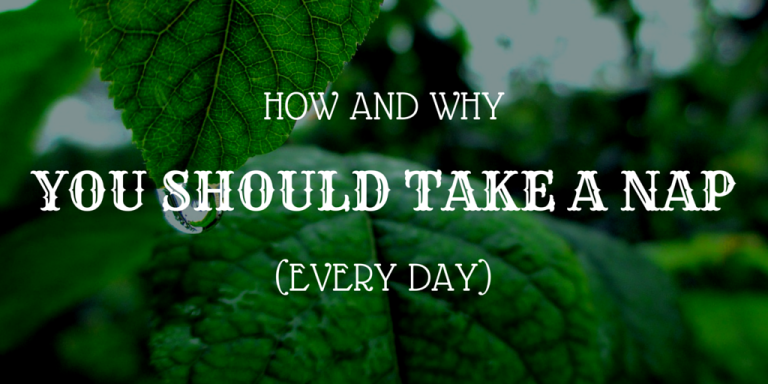When I recently moved to Barcelona I thought I’d found the perfect excuse to engage more in one of my favorite past-time hobbies – taking siestas. Turns out I was wrong, but there’s hope!
Apparently siestas aren’t that popular in Spain anymore. 😞
So I turned to science for help and searched for studies on sleep. It’s still a surprisingly new field of research but at least some things are agreed on and there are a lot of interesting results to dissect.
Downsides of sleep loss #
Sleeping too little has quite negative effects on your cognitive abilities1.
Sleeping less than seven hours increases your reaction time by 250 ms on average2.
Sleep deprivation leads to decreased learning capabilities1.
Short sleep duration increases your risk of obesity3.
Sleep loss also makes it a lot harder to focus1.
It’s incredibly common that people are sleep deprived. One study estimated that it’d cost a whopping $20 billion (!) to test and treat everyone who has sleep apnea in the US4.
Benefits of sleep #
Not only can we avoid all those negative effects of sleep loss, but by increasing our sleep further we can reap even more benefits.
One intervention study on baseball players had them spend at least ten hours per night in bed5. They then measured their sprint time (86 meters), 3-point shooting accuracy, and reaction time.
After 5-7 weeks of increased sleep the players cut more than one second off of their sprint time, increased their accuracy by 9%, and improved their reaction time.
Those are great results! Especially considering they didn’t actually do anything but stay in bed.
How sleep works #
I’d love to sleep ten hours per night but I doubt neither you nor me can spend that much time in bed.
So what do we do? Let’s first have a look at why we sleep in the first place.
As I initially said, it’s still a new field and there’s a lot we still don’t know. As far as we know today though, there seems to be two processes controlling your sleep.
One is the sleep-wake homeostasis, which starts as soon as you wake up6. As your body uses energy it’s broken down to adenosine, which makes you increasingly sleepy7. When you fall asleep your body clears this up and you begin anew when waking up again.
The other process is the circadian rhythm, which basically is a fancy word for your built-in 24-hour biological clock. Using light and temperature your body knows when it’s time to sleep and when you should be awake.
Cool trivia: blind people can be affected by light too and have their biological clock adjusted8.
Benefits of napping #
Even if we can’t get the ten hours of sleep during night, we have options.
Enter the siesta! Or nap, daytime sleep, polyphasic rest, etc. Dear child has many names.
People taking naps showed a 12% reduced coronary mortality rate9. Frequent nappers even more so – with a 37% reduction!
Napping can lower your blood pressure and is associated with less hypertension10.
If dying less isn’t enough to convince you, napping also ups your mental game.
Naps makes it easier to acquire new motor skills11.
They also help improve your existing skills even if you’re only training them in your head12.
Finally, napping is also proven to help combat obesity resulting from sleep loss3 and improve your recovery after training13.
How to nap #
In a day we often feel the most sleepy just after noon. That’s partly due to the food we just ate for lunch but also because of the build-up of adenosine, in the sleep-wake homeostasis process.
Our circadian rhythm will kick in some time after lunch and boost us until night time.
Just before this is the ultimate time to have a little eye-shut14 15!
Find a dark, quiet room, set the alarm for about 25 minutes16, and go to sleep. It’s still good even if you can’t actually fall asleep. Keep at it as often as you can and you’ll become better at it15.
Remember to set the alarm though and don’t sleep more than half an hour, as it’ll take you much longer to wake up and feel the benefits of the nap.
In fact, frequently napping for more than an hour has been associated with some negative drawbacks17 18, although no causation has been found.
Nap hack #
Let’s finish off with a little hack.
We know that through sleep-wake homeostasis, adenosine builds up over the day7. It binds to adenosine receptors and is cleared up when we sleep.
Guess what else bind to the same receptors, and inhibits more adenosine to bind? Caffeine19!
It takes about 30 - 40 minutes for caffeine to be fully absorbed after drinking a cup of coffee, which is perfect for our napping purposes.
Down a double espresso before taking a nap and wait for it to work its magic. While your body clears up the adenosine, caffeine is absorbed and binds to the receptors.
The result is you wake up feeling even more reinvigorated. Perfect time to go lift some heavy weights!
You snooze, you win!
- Functional and Economic Impact of Sleep Loss and Sleep-Related Disorders↩
- The Effect of Sleep Deprivation on Choice Reaction Time and Anaerobic Power of College Student Athletes↩
- Association between sleeping hours and siesta and the risk of obesity: the SUN Mediterranean Cohort.↩
- Reducing motor-vehicle collisions, costs, and fatalities by treating obstructive sleep apnea syndrome.↩
- The Effects of Sleep Extension on the Athletic Performance of Collegiate Basketball Players↩
- Sleep homeostasis and models of sleep regulation.↩
- Adenosine and Sleep↩
- Suppression of melatonin secretion in some blind patients by exposure to bright light.↩
- Siesta in healthy adults and coronary mortality in the general population.↩
- Siesta is associated with reduced systolic blood pressure level and decreased prevalence of hypertension in older adults.↩
- Daytime Naps, Motor Memory Consolidation and Regionally Specific Sleep Spindles↩
- Daytime naps improve motor imagery learning.↩
- The effect of prior endurance training on nap sleep patterns.↩
- Good sleep, bad sleep! The role of daytime naps in healthy adults.↩
- The effects of napping on cognitive functioning.↩
- A brief afternoon nap following nocturnal sleep restriction: which nap duration is most recuperative?↩
- Association between habitual daytime napping and metabolic syndrome: a population-based study↩
- Daytime napping and the risk of all-cause and cause-specific mortality: a 13-year follow-up of a British population.↩
- Caffeine and adenosine.↩


